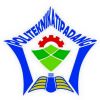ANALISA PENYEBAB TINGGINYA NILAI CACAT DAN PENURUNAN KUALITAS KOPI GAYO MENGGUNAKAN DIAGRAM FISHBONE
Abstract
Coffee is the center of community activity in the Gayo Highlands (DTG). Coffee industry activities from upstream to downstream are the economic center of the DTG community. Therefore, consistent productivity and quality must continue to be considered, maintained and improved so that the selling power of coffee from DTG remains good and is expected to remain good on an ongoing basis. Increasing coffee productivity must also be in line with local wisdom, climate change and environmental sustainability. This study aims to examine the main causes that influence the productivity and marketability of Gayo coffee in line with local wisdom, climate change and environmental sustainability. Furthermore, this research tries to provide an action plan that is in line with the problems that have been identified. The results of the literature review concluded that there are structured problems in increasing coffee productivity related to the age of coffee plants, farmers' understanding, conditions of planting areas, modernization of equipment and quality measurement methods.
Keywords
Full Text:
PDFReferences
Abubakar, Y., Hasni, D., & Wati, S. A. (2022). Analisis kualitas buah merah kopi arabika gayo dan korelasinya dengan kualitas biji pada ketinggian berbeda. Jurnal Tanaman Industri dan Penyegar, 9(1), 1-14.
Azmi, N., Abubakar, Y., Juanda, J., & Satriana, S. 2022. Tingkat Kesukaan Konsumen terhadap Kopi Wine Gayo pada Beberapa Derajat Penyangraian. Jurnal Ilmiah Mahasiswa Pertanian, 7(2), pp. 324-329.
Bambang P. 2010. Budidaya dan Pascapanen Kopi. Eska Media, Jakarta.
Badan Pusat Statistik. 2020. Statistik Kopi Indonesia 2020. Badan Pusat Statistik Indonesia, Jakarta.
Edowai, D. N., & Tahoba, A. E. 2018. Proses produksi dan uji mutu bubuk kopi arabika (Coffea Arabica L) asal kabupaten Dogiyai, Papua. Jurnal Agriovet, 1(1), pp. 1-18.
Micco, C., Grossi, M., Miraglia, M., & Brera, C. (2015). A study of the contamination by ochratoxin A of green and roasted coffee beans.
MZ, R. P., Kusumaningrum, H. D., & Haryadi, R. D. (2020). Prevalensi kapang okratoksigenik dan kandungan okratoksin A pada kopi Selang Semende. agriTECH, 40(2), 110-117.
Saolan, A. Sukainah, dan M. Wijaya. 2020. Pengaruh Jenis Kemasan dan Lama Waktu Penyimpanan Terhadap Mutu Bubuk Kopi Robusta (Coffea robusta). Jurnal Pendidikan Teknologi Pertanian. 6(2), pp. 337-348.
Sianipar, H. 2017. Keragaman Genetik Populasi Kopi Liberika (Coffea Liberica W. Bull Ex. Hiern) Di Kecamatan Betaraberdasarkan Karakter Buah Dan Biji. Universitas Jambi.
Sulistyaningtyas, A. R., 2017. Pentingnya Pengolahan Basah (Wet Processing) Buah Kopi Robusta (Coffea robusta Lindl.ex.de.Will) Untuk Menurunkan Resiko Kecacatan Biji Kopi Hijau Saat Coffee Grading. Prosiding Seminar Nasional Publikasi Hasil-Hasil Penelitian dan Pengabdian Masyarakat ,1(2), pp. 90-94.
Refbacks
- There are currently no refbacks.






_-_Copy1.png)
